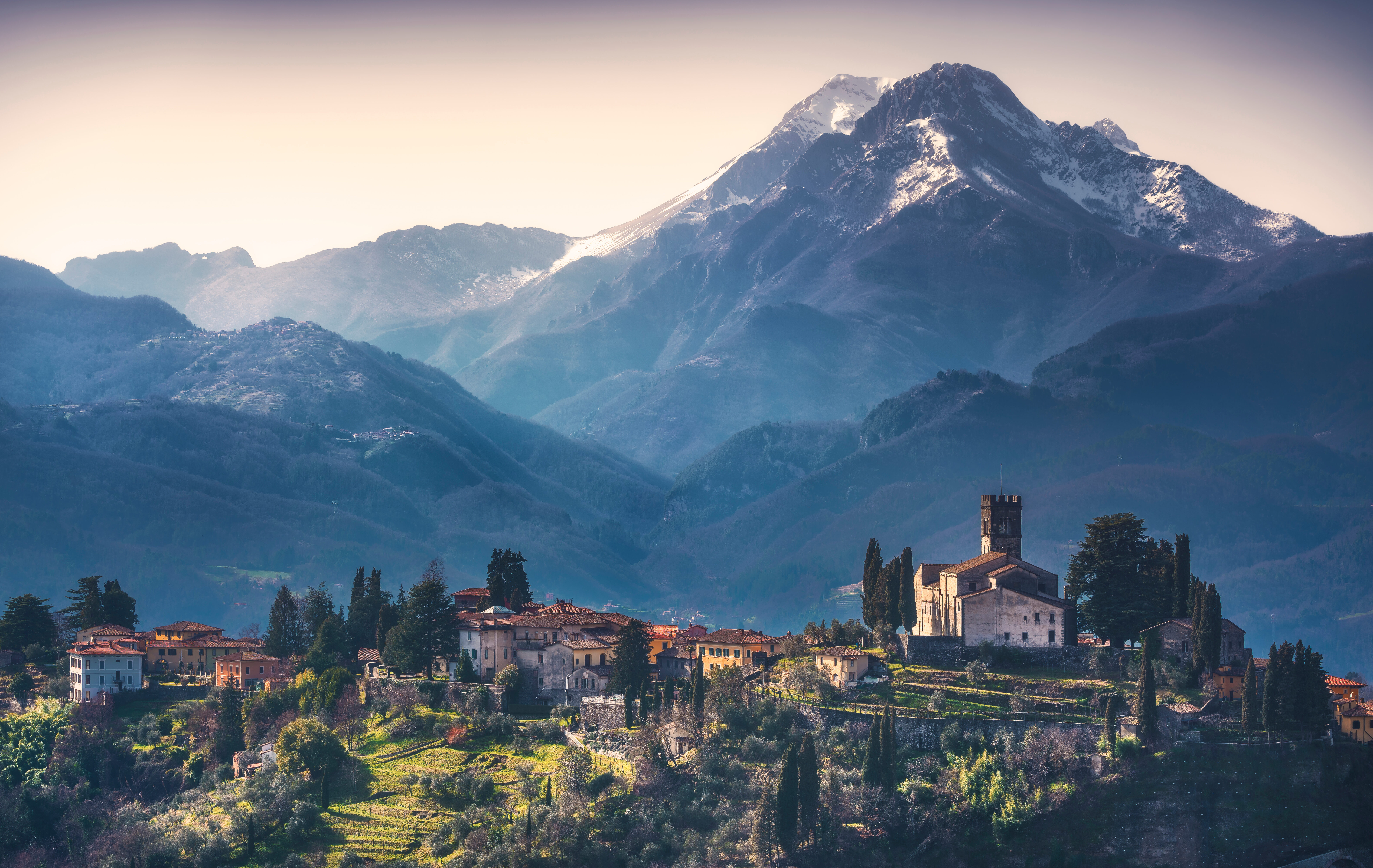Morning and Evening on the Piazza
The piazza provides a physical space for the most natural human desires.

On weekends or weekdays, Barga rises slowly. Its piazzas sit mostly vacant, aside from a shopkeeper or two sweeping their stoop or rearranging the displays in their windows. It will be several hours before they open.
To find signs of life before eleven in the morning, one must take a short walk out of the old city. The smell of espresso and of fresh-baked focaccia and croissants pulls one toward Lucchesi, the local pastry shop. The cafe and its patio function as its own piazza of sorts in these morning hours. Men in white tees and greaser cuts sip espresso across from women wearing what look like modern variants of swing dresses. Their brightly painted lips leave stains on their own espresso glasses. It’s a vintage scene, but one familiar with the town’s night life does not find it out of place. Leathery women in brightly colored linen suits gossip, and not very discreetly for that matter, while men with gray and white beards stand about enjoying a cigarette.
Looking south towards the mountainside, the old city is still plainly in sight. It has sat there, nestled into the hillside, since at least before the ninth century. The Church of San Cristoforo, named for the town’s patron saint, marks the high point of the town.
Like the old city, the new is still walkable—this, despite the necessary presence of automobiles. Just a stone’s throw away from Lucchesi sits a piazza much larger than those found in the old city. It is much more open than the piazzas of the old city, too. On one end, it is lined by the main road that cuts the new city in two. The portions where it is hemmed in are lined with restaurants, a butcher’s shop, a gelateria, and a primary school. Some evenings, a small market and carnival, complete with a worn-down carousel, make the piazza their home.
The creaking of the tin carousel directs thoughts to the other steel and concrete buildings that dot parts of the new city—not even this hidden away mountain town could escape the cancer of modern architecture. Nevertheless, the forced perspective of the new city’s piazza beckons one’s gaze and steps to the old city.
Within the old city’s fortifications—a combination of walls, hills, and residential buildings—it is mostly pedestrian, apart from the occasional small, typically three-wheeled service vehicles that mostly avoid the heart of town.
The curved, sloping streets of the old city give twofold dimensional value. The first makes the town seem more sprawling by obscuring the streets’ endpoints. The second also gives the impression that the town is larger, but in a vertical sense. The curves of the street cause one to confront the buildings that lie ahead. Though they are only around four stories, they seem much higher. Yet, still, it doesn’t make pedestrians feel small.
Pictorial values are reserved for monuments and piazzas. Curves give way to straight shots into the heart of city life—religious, political, communal. It guides the townspeople inside like a funnel. Once there, especially as dusk falls, the buildings that bound the commons aside from two or three access points encourage one to become sedentary, at least for a moment, like a giant stone nest.
Subscribe Today
Get daily emails in your inbox
And the townspeople do nest there. The piazza is filled with the same cast of characters spotted throughout the day. In the hours since breakfast, Lucchesi’s patrons and passersby have migrated to the old city. They’re more or less doing exactly what they had been that morning. The younger couples chat, though now with a larger group of friends and have traded their espresso for white wine or a spritz; the leathery women are still gossiping, crows feet and wrinkles creased in Pinot Grigio smiles; the old men are still smoking, standing shoulder to shoulder propped up along the buildings that border the square. Families that you saw at Mass or at dinner or at a local shop that hadn’t said a word to one another while going about their day now stop for a while to greet each other and to let their kids play or dance to the music that fills the evening air.
I cannot be sure how much of this is intentional from an urban planning standpoint. Barga doesn’t give the impression of intentionality; it seems much too old for those kinds of considerations. According to plaques around the cities, for example, what is now multi-unit housing were once large estates owned by the town’s wealthy and noble families. The Barga that exists today is in many respects a product of historical and geographical necessity.
But look closer, and you will find a natural kind of intentionality. Much has changed over the old city’s history that has stretched more than a millennium. Yet, Barga and its inhabitants, past and present, know what is good for the human spirit: religion, community, family. While what surrounds it has been in flux, the physical space afforded for these pillars of civilization remains fixed, like the desires of human nature it springs from.
Comments